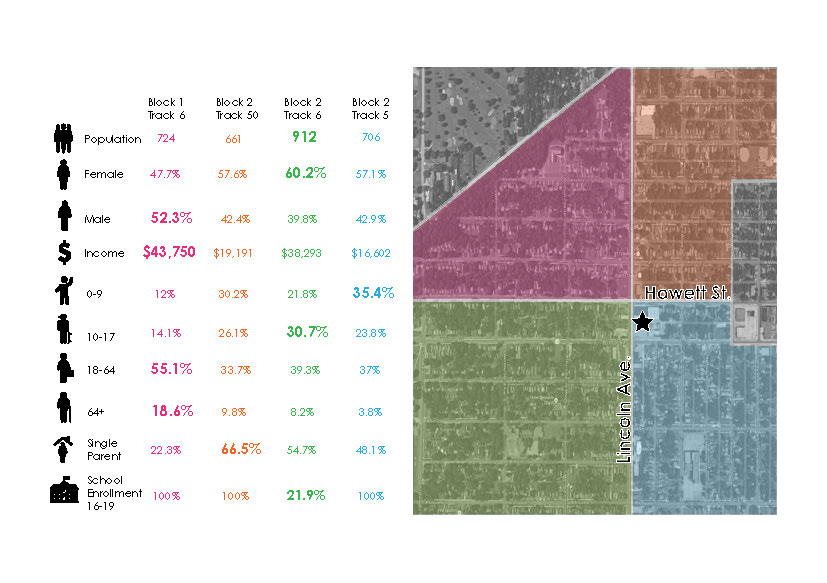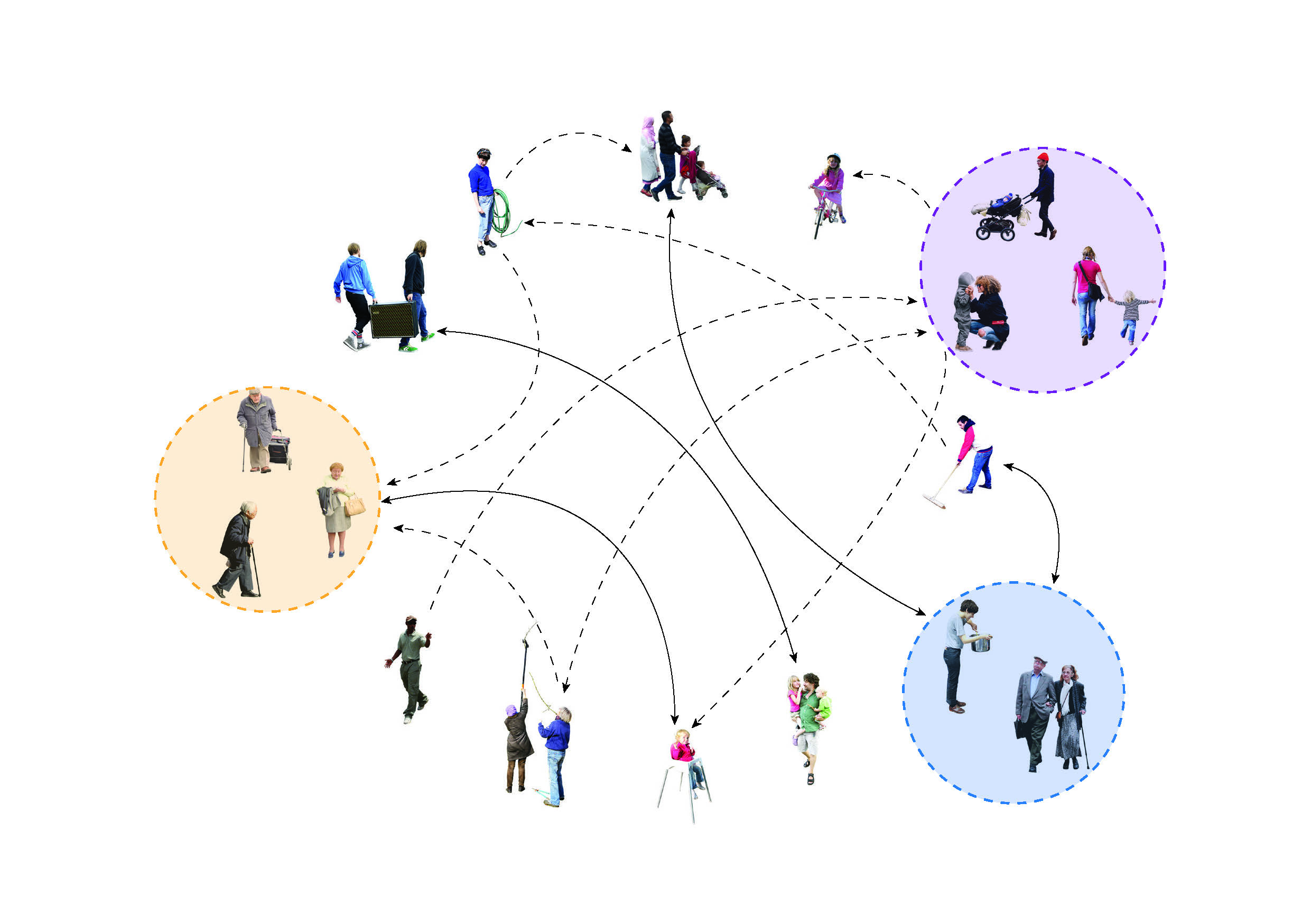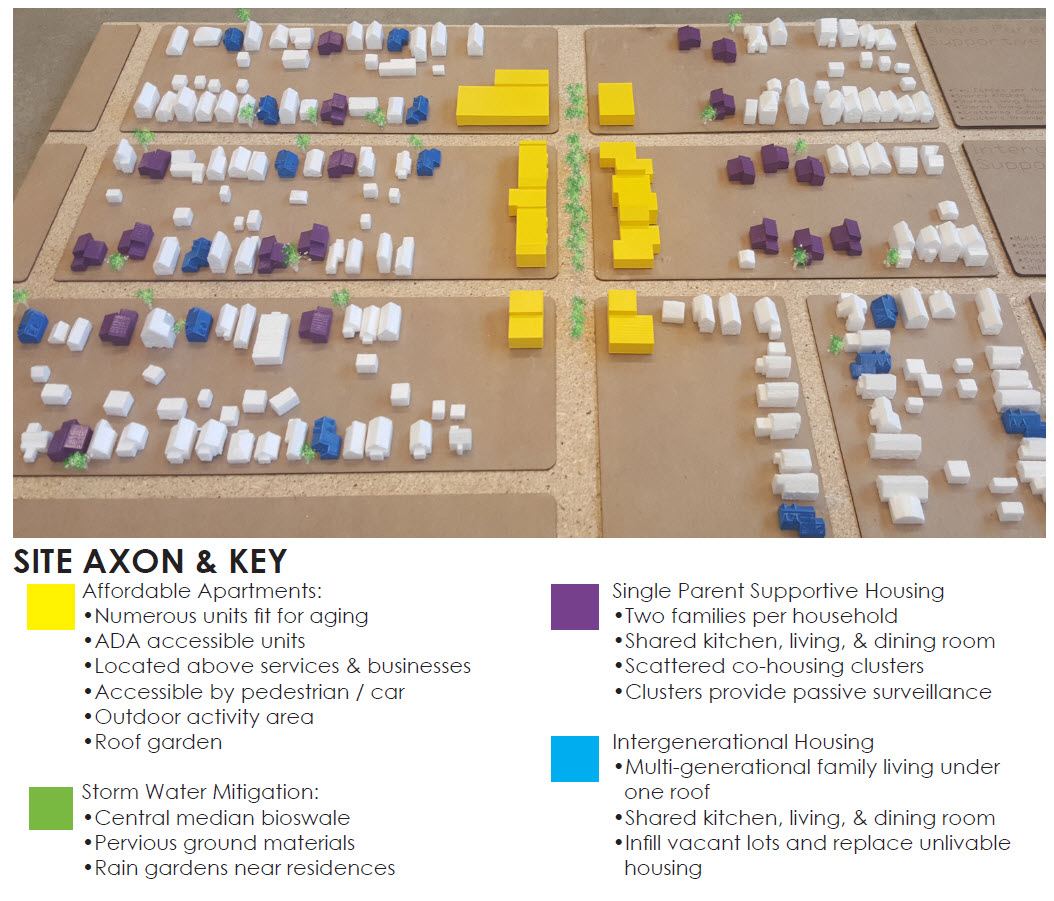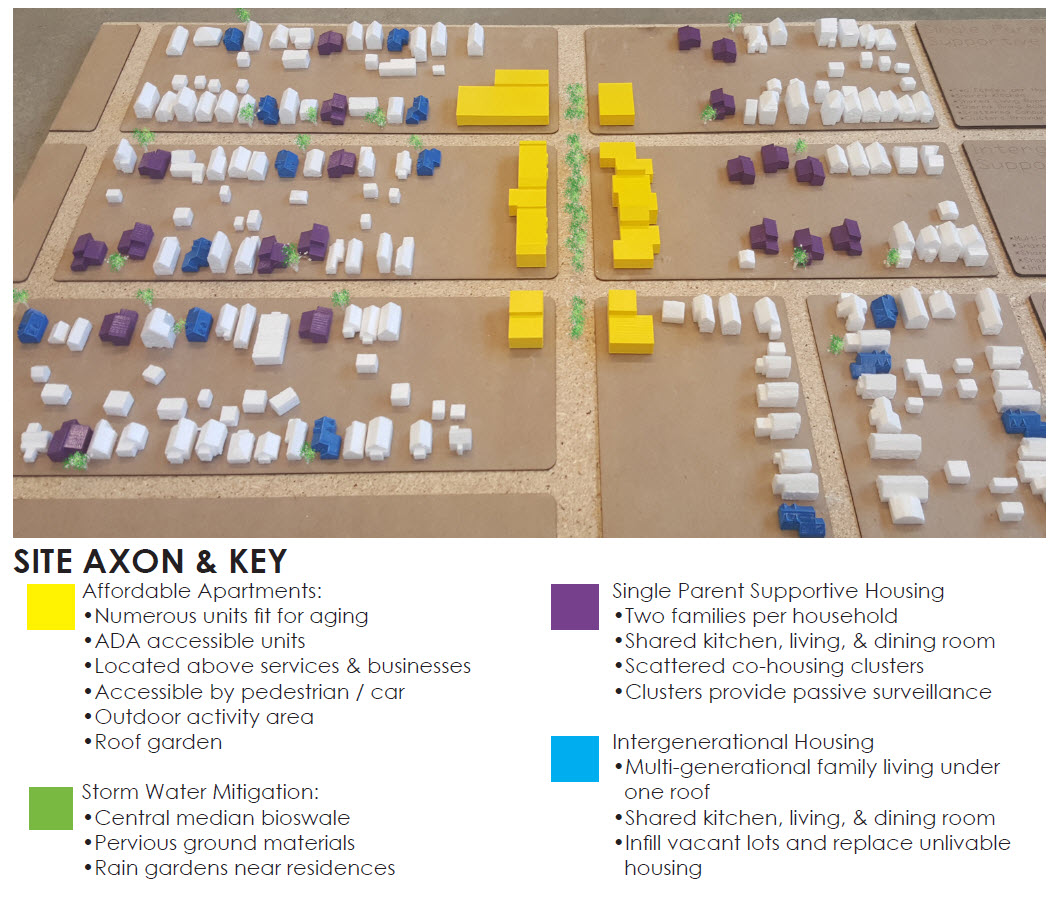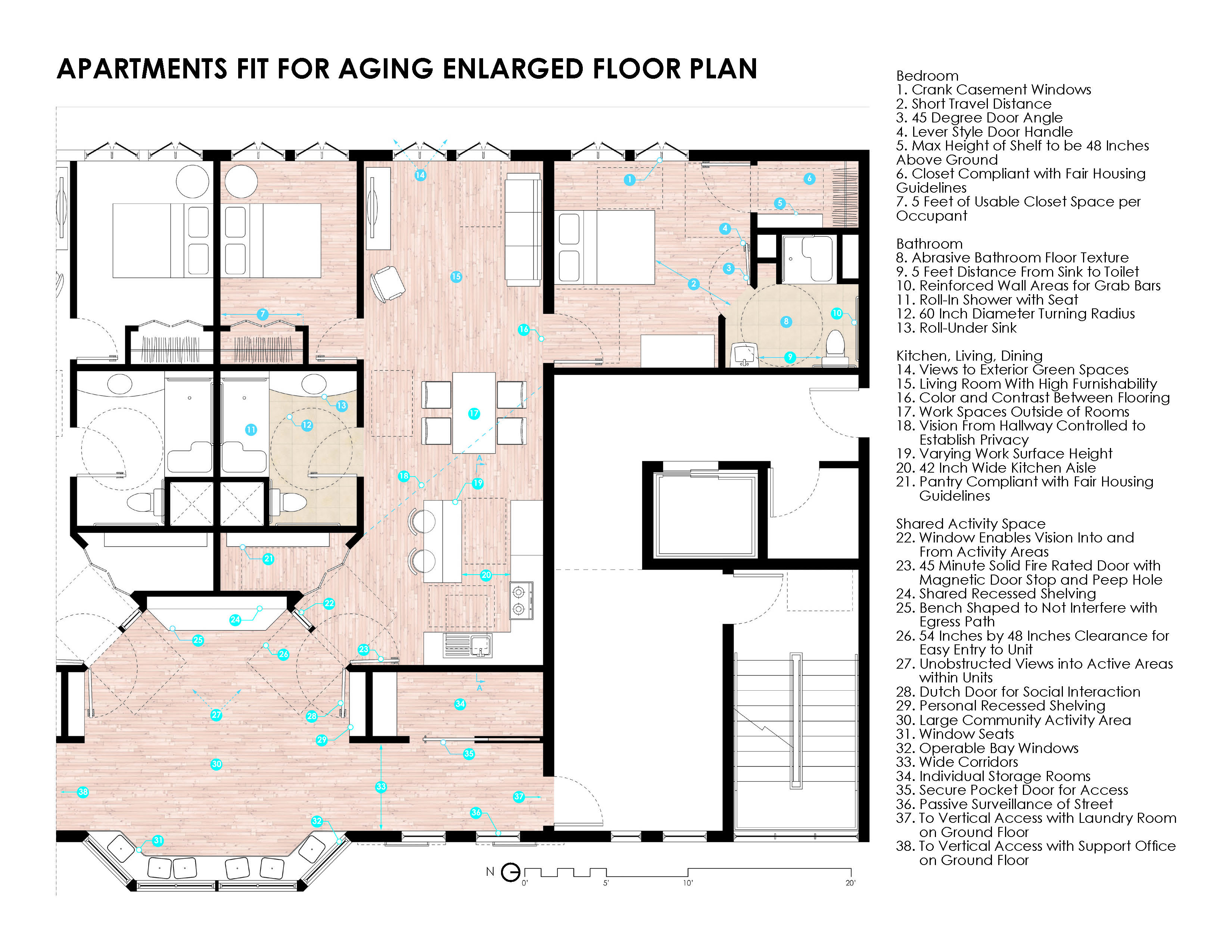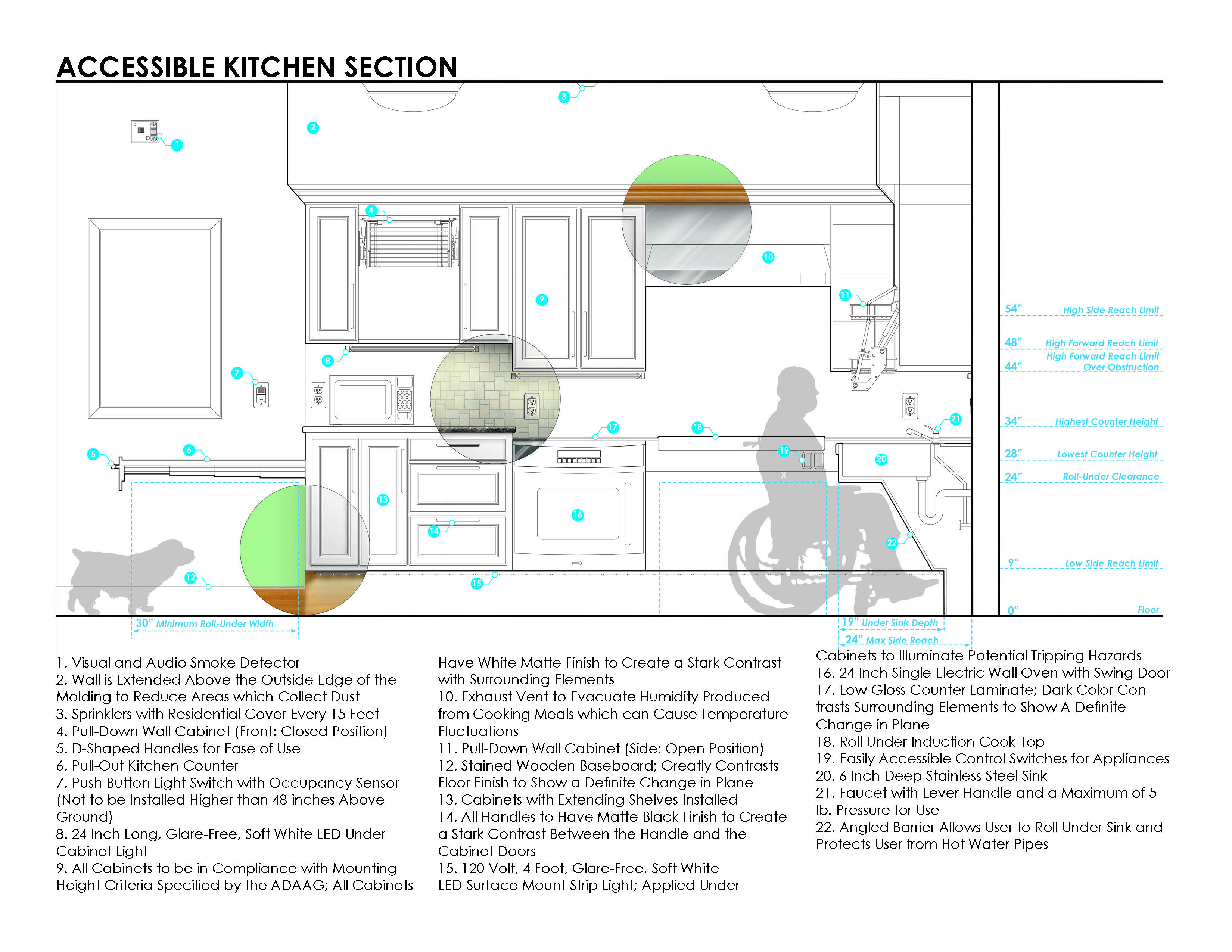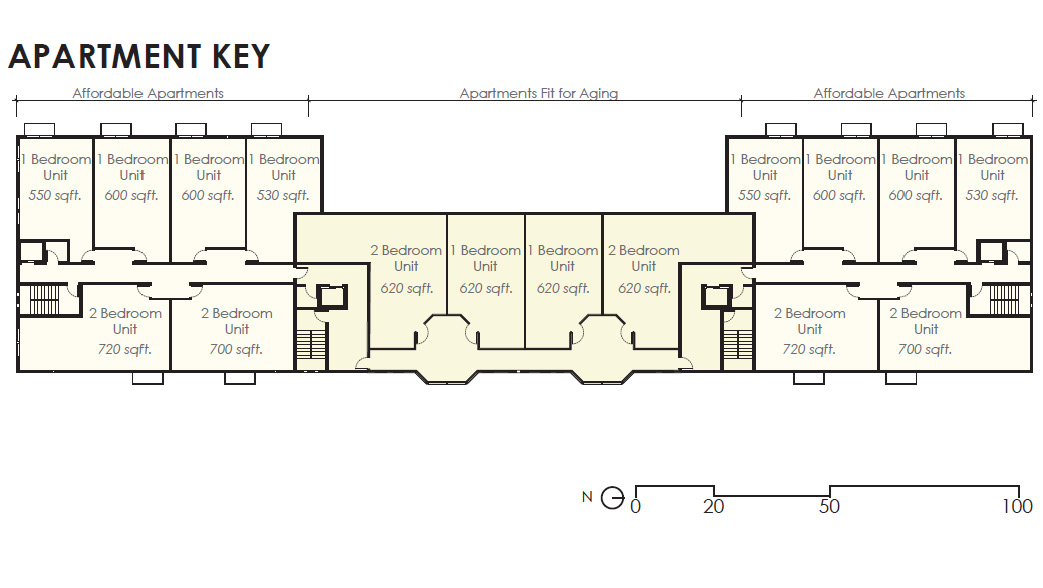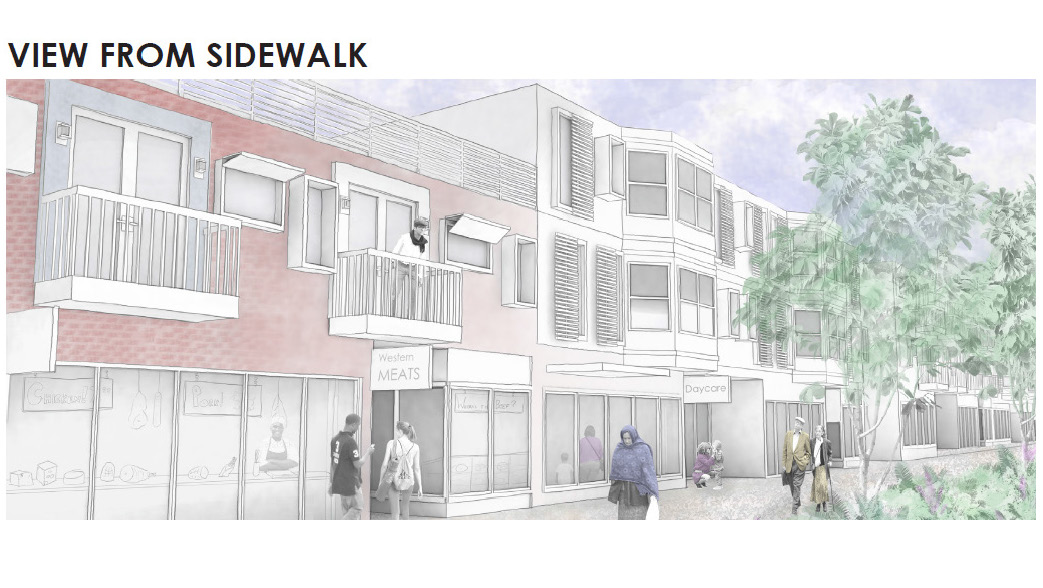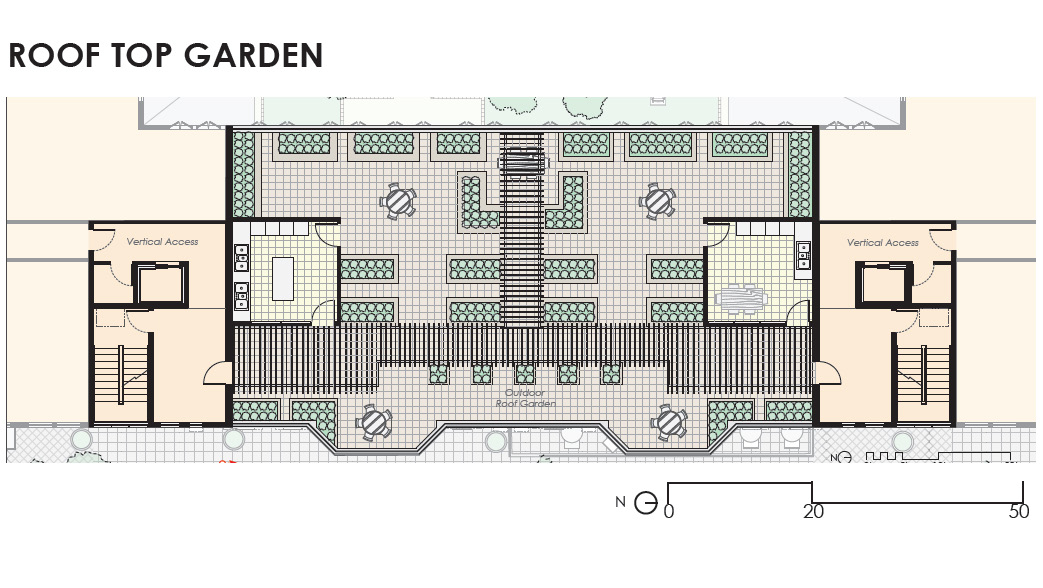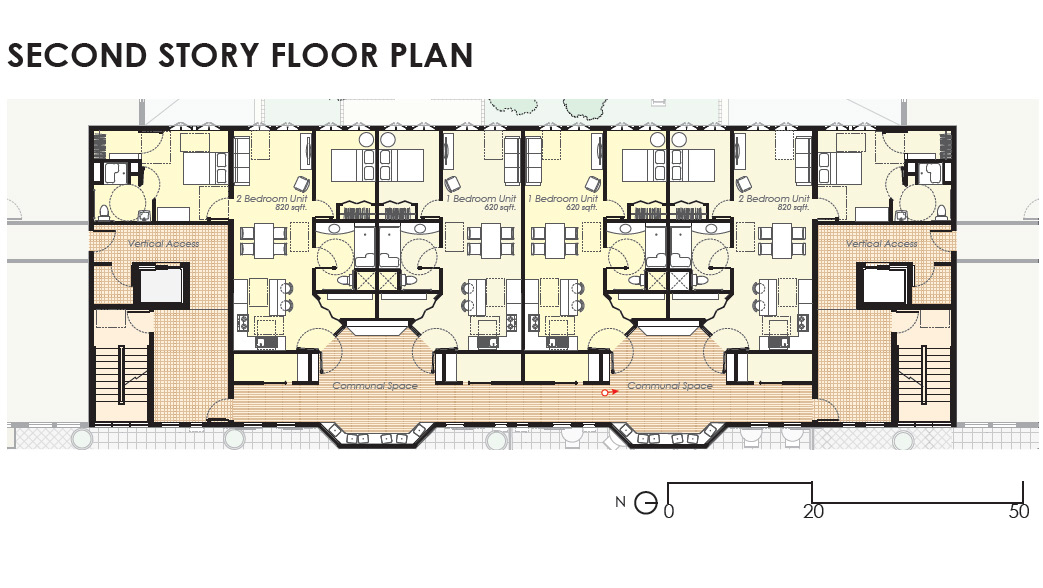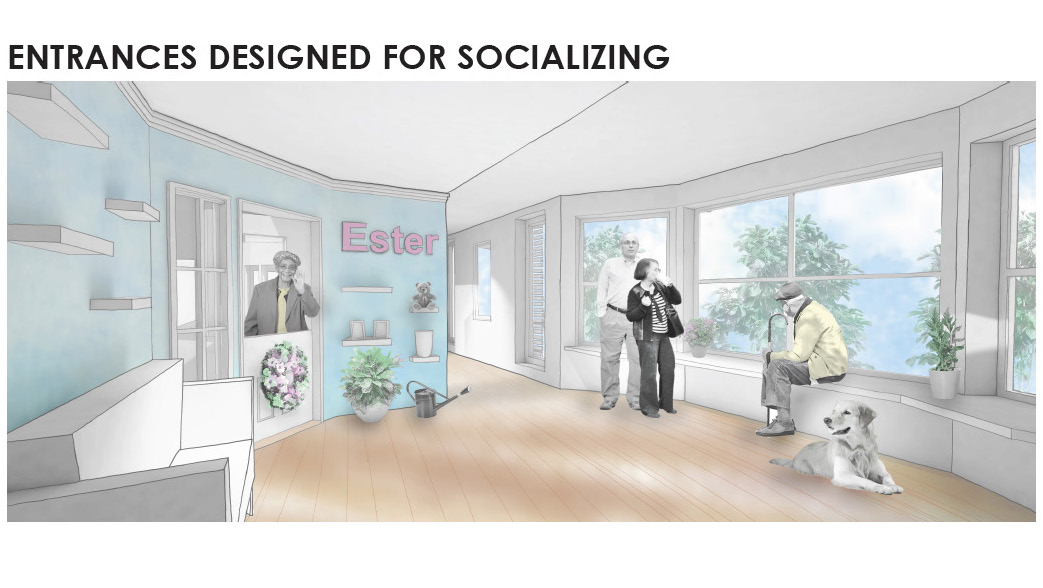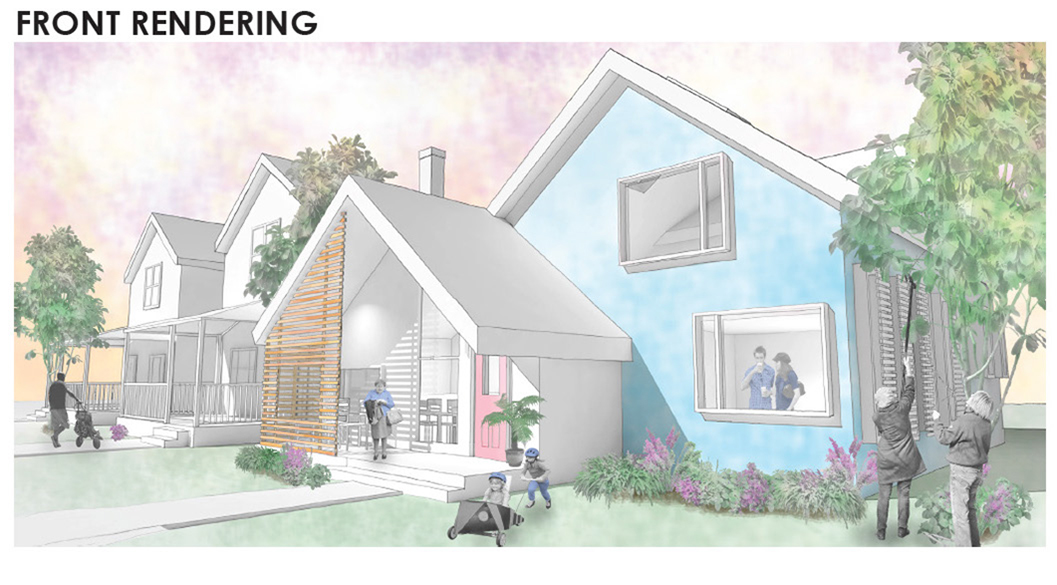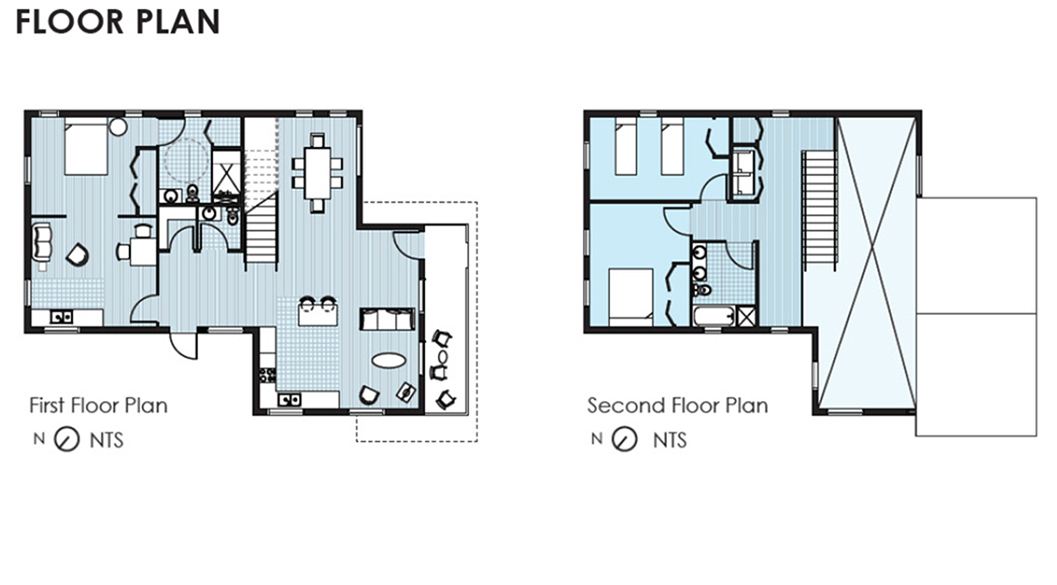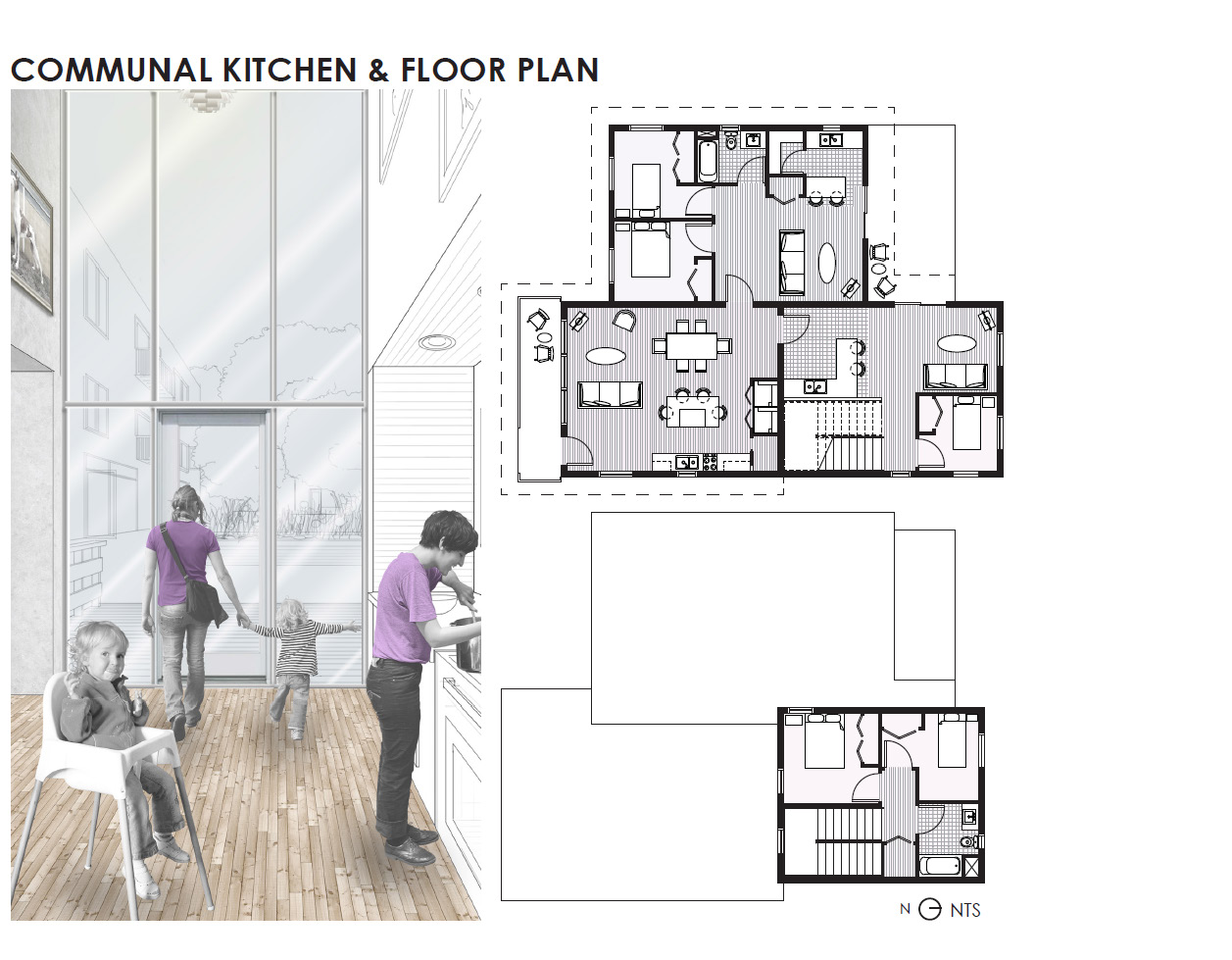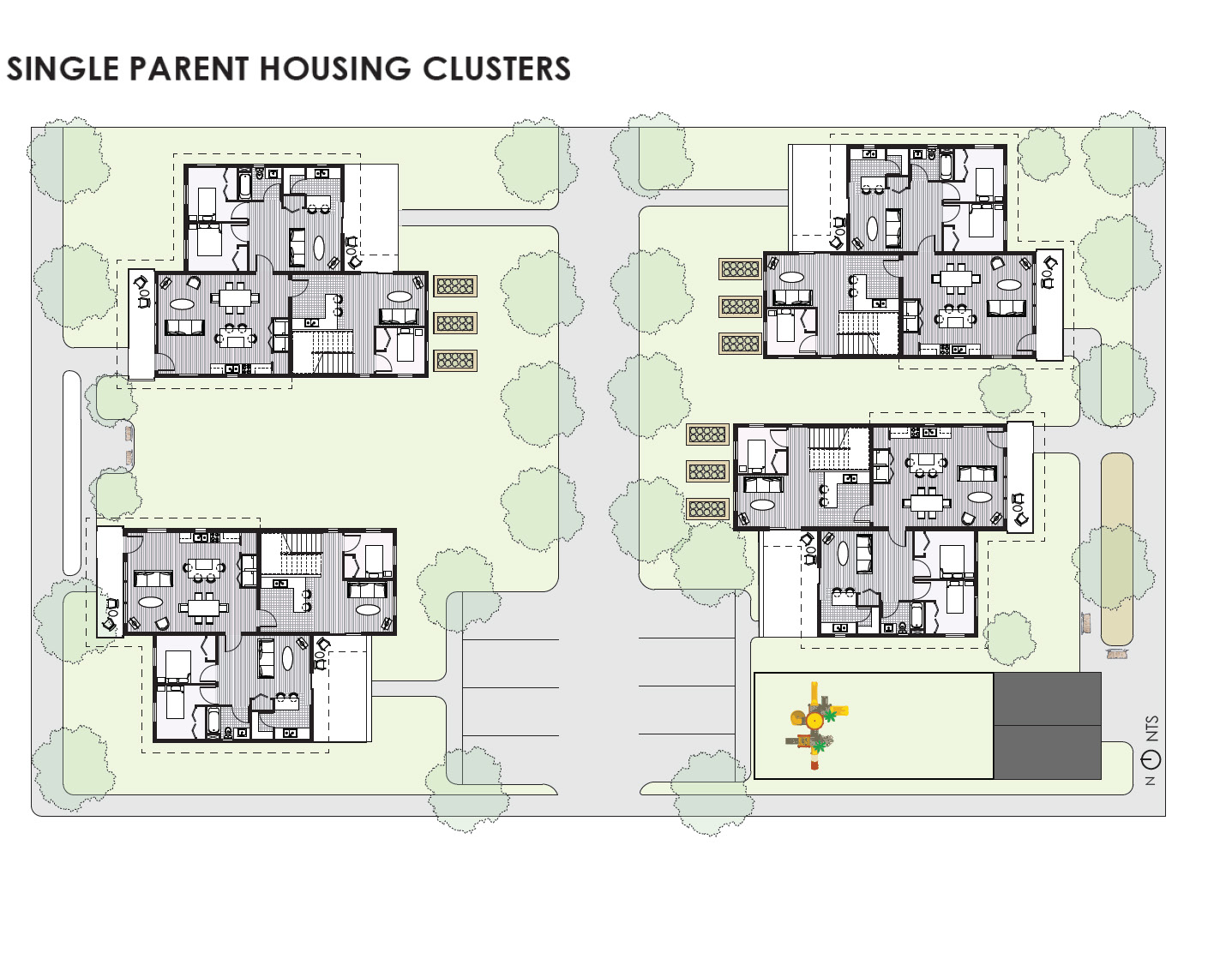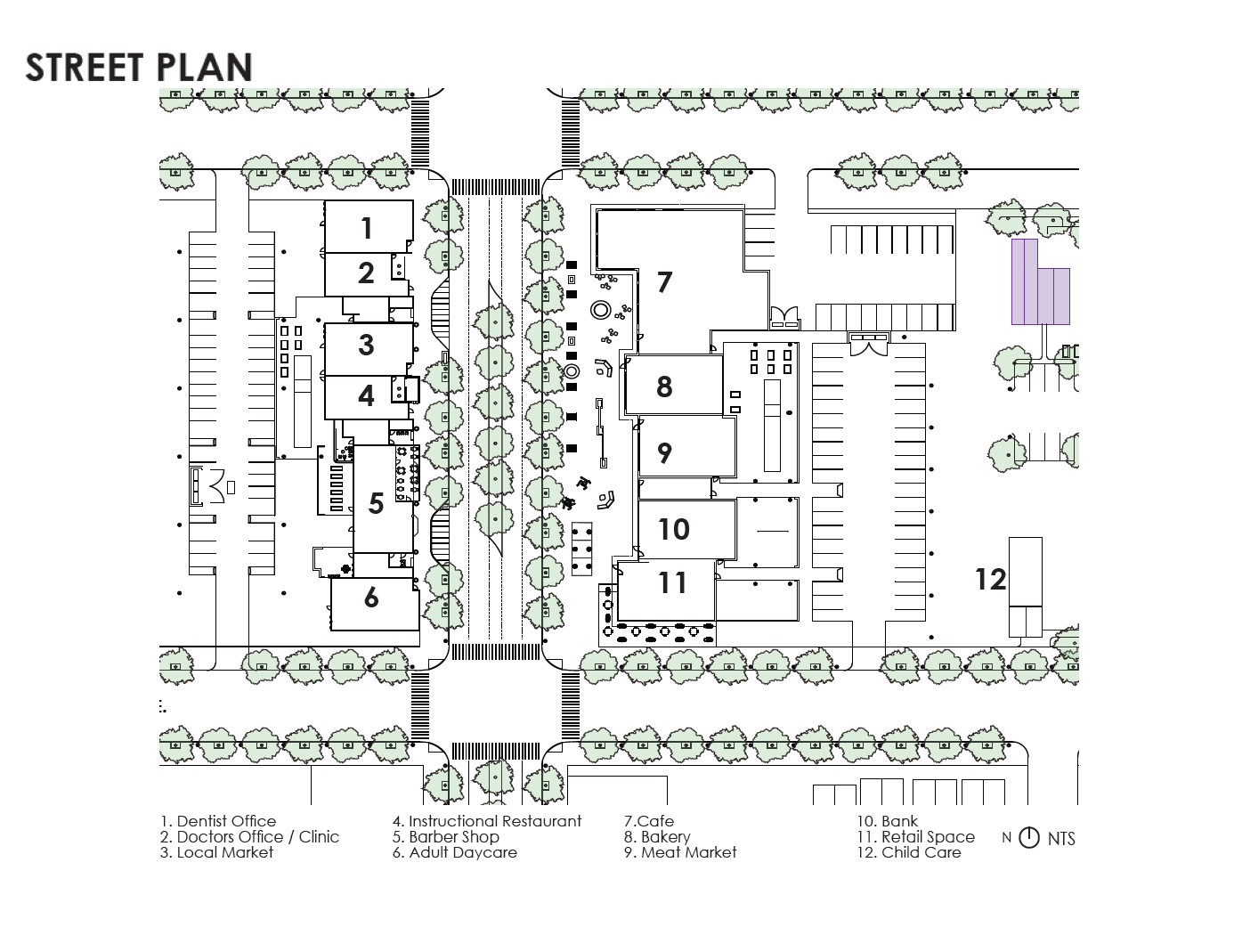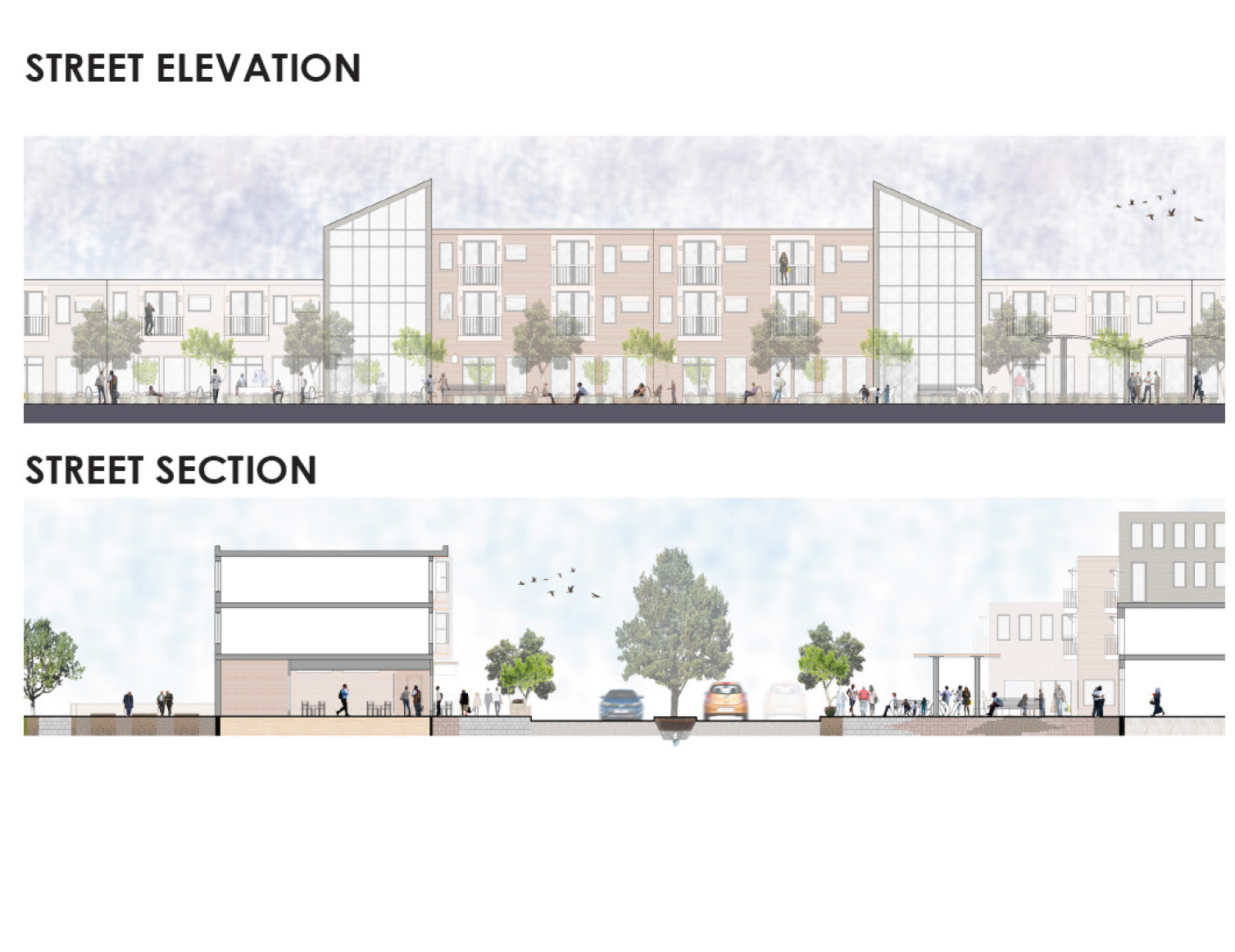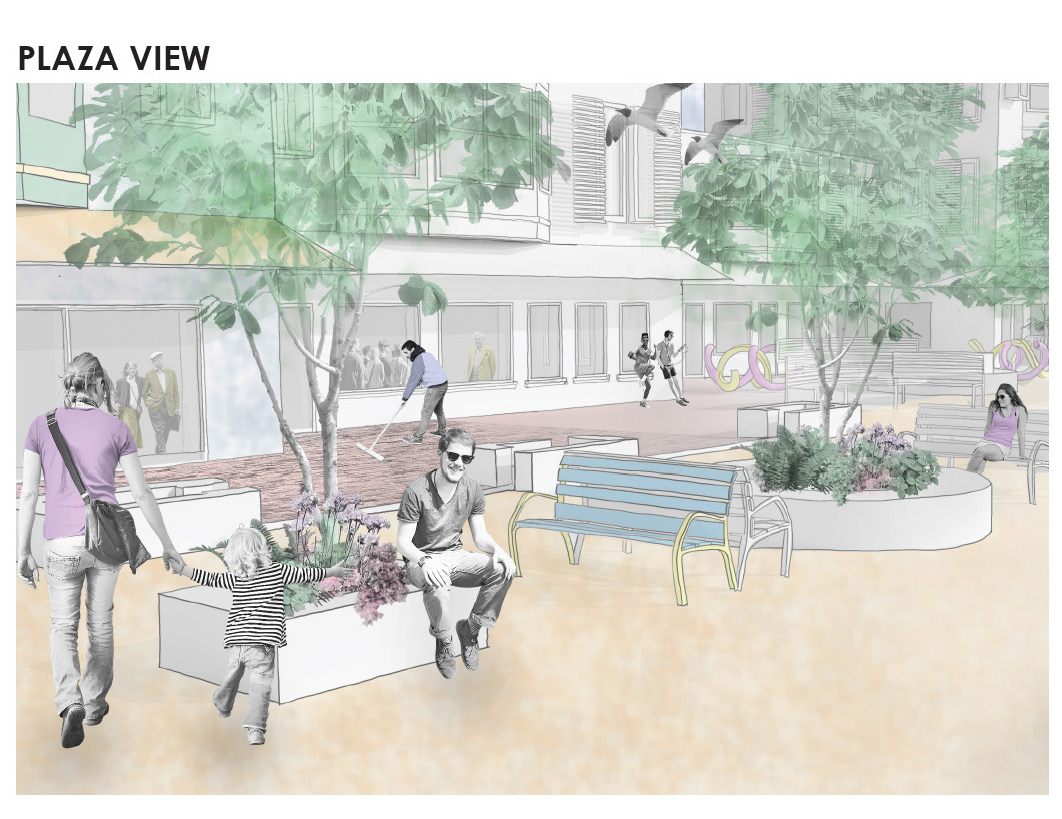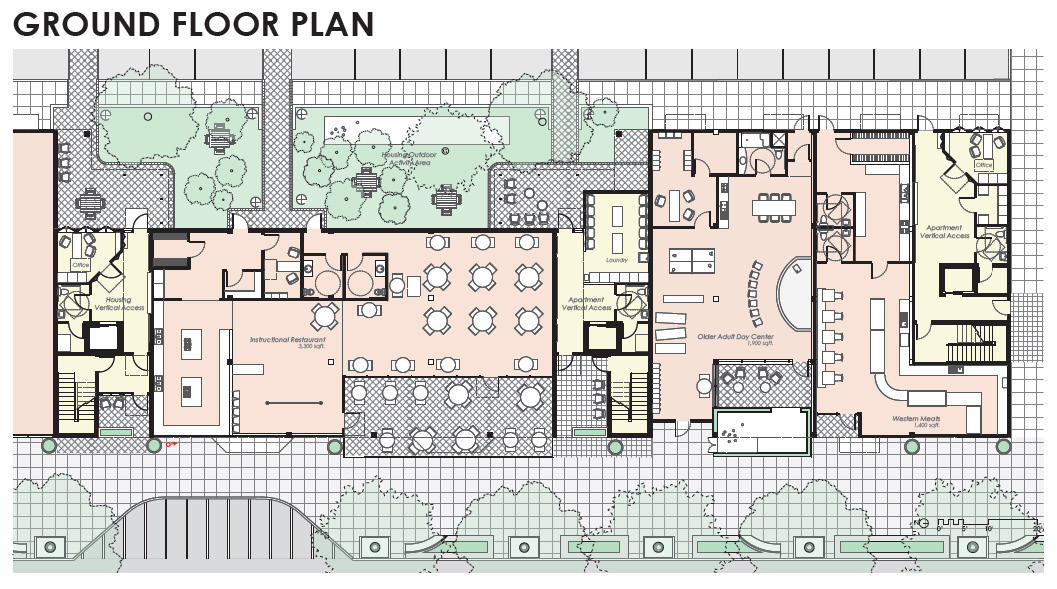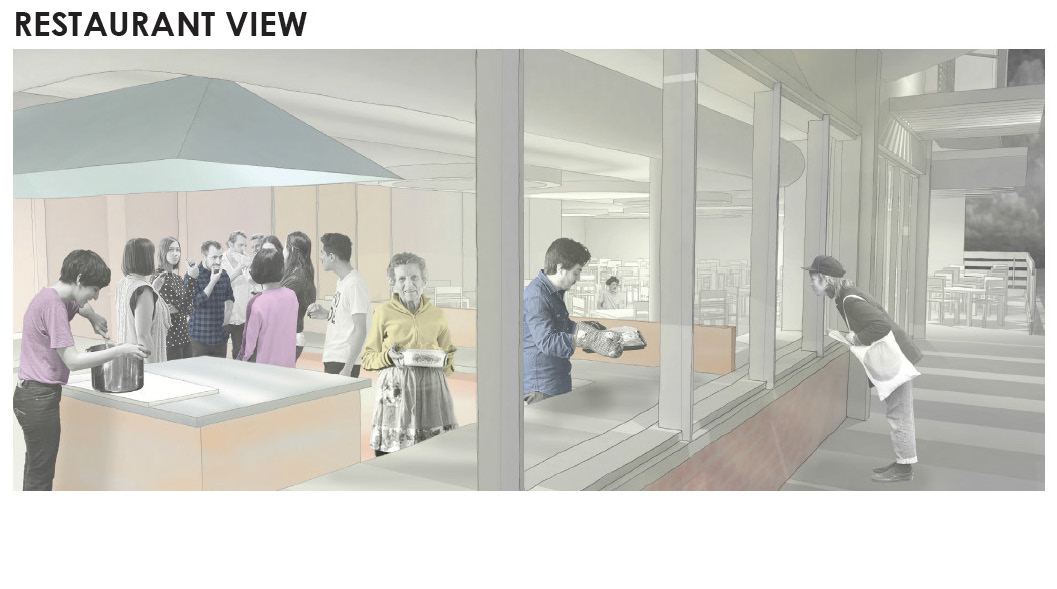ARCH 572: Realizing a Healthy “Heart of Peoria” – Spring 2016
Graduate Students: Connor Chelmecki, Kelly McCaffrey, John Nelson, Nineveh Rasho
NEW APPROACHES TO HOUSING NEEDS
A strong social environment through housing and street redevelopment
A supportive community-based system is an environment that encourages a diversity of social interaction, exchange of ideas, and an overall cooperative way of life. The neighborhood has a high level of home vacancies and a low number of owner-occupied housing. Residents are generally limited to one option: single family homes. In response, four types of supportive housing are proposed to serve the community.
Affordable housing located along Western Avenue provides tenants with a strong connection to the surrounding community. Housing fit for aging adults focuses on appropriate amenities and accommodations with ample opportunity for social interaction. Intergenerational housing allows multiple generations of families to live together under one roof while seamlessly fitting into the existing residential context. Finally, there are homes that specifically help single-parent households develop a tight-knit supportive community for family progress. Along with these four housing types, a redeveloped street front along Western Avenue will house supportive core services and create economic and job opportunities for residents. Services will be implemented throughout the neighborhood. They offer expanded social connections and facilities tailored to resident needs while also providing an educational component. Focusing on the residents’ experience along the sidewalks helped create open exterior public spaces where residents can see into facilities such as the instructional restaurant.
APARTMENTS FIT FOR AGING
Making “aging-in-place” possible for independent seniors
Several buildings offering affordable housing line Western Avenue. The buildings shown below, are specifically designed to encourage productive aging in older adult populations. These units respond to age-associated physiological changes and support informal social networks to assist with informational, emotional, and instrumental needs. Individual autonomy is optimized through intricate details within and around the units. These details make instrumental activities of daily living simple for the range of functional capacity a person may have.
Moreover, physical activity is encouraged with the incorporation of exterior spaces which allow for active leisure and rejuvenating activities such as gardening in raised beds. Social and civic engagement is promoted through the close proximity of apartments to street-level supportive services. These services as well as numerous social magnets within the vertical access points, encourage cross-generational relationships and bridge social ties to improve mental and social well-being. Finally, the construction utilizes durable materials, limiting the need for maintenance. Allowing pet ownership creates and deepens valuable relationships for older adults. With the implementation of these apartments fit for aging, a majority of the older population can continue to live independently while simultaneously improving their overall quality of life.
INTERGENERATIONAL HOUSING
Housing for families with multiple-generations living under one roof
Intergenerational housing addresses the needs of families with at least three generations. The purpose of creating a unit that offers a studio apartment for the eldest generation is to increase the opportunity to age in place while maintaining a sense of independence. By creating a fully accessible ground floor level that meets Americans with Disability Act (ADA) standards, parents and grandchildren can keep an eye on the safety of their elders. In addition, the grandparent can serve as an extra caretaker for their grandchildren while conveying key parenting skills to their own children.
This type of housing encourages the younger generations to stay in the neighborhood and act as a support system to the older generations. The experience of multi-generational relationships can be emotionally fulfilling for grandparents. The opportunity to teach cultural and family beliefs and values to younger generations provides grandparents great satisfaction and improves their psychological wellbeing. This style of housing is especially successful among minority populations and in low-income areas. It prevents declines in health among older populations and provides support when there is a loss of a partner or spouse.
SINGLE PARENT HOUSING
Supportive social housing for single parents
In the South Side Neighborhood, 48% of the family households are headed by single parents who need specialized housing options. By providing a shared facility in the neighborhood complete with a full kitchen, dining space, laundry, and living area, it opens up opportunities for social interactions and support between neighbors. Each family apartment includes a shared entrance from the common space into a two to three bedroom unit with one full bathroom.
The living space within the single parent family housing includes a kitchenette and small seating area opening up to a shared exterior common space. By including small living spaces that do not offer all the essentials such as an oven or full refrigerator, the residents are encouraged to use the common area. Encouraging neighbors to interact with each other will increase social capital, allow residents to share cooking and cleaning tips and babysit each others’ kids. The single parent housing units can be used as the next step after the South Side Mission’s New Promise Center and are adaptable into apartments fit for aging. All in all, clustering the housing and providing an on-site community house that offers both a day care and a management office with career and life services encourages neighbors to become each others’ support system.
CORE SERVICES
Redeveloped Lincoln Avenue with services and community plaza
A variety of supportive services are located below the apartments along Western Avenue. These have been developed to respond to the need for employment, job training, education pertaining to certain health-related topics, and a general lack of needed services within the South Side of Peoria. These proposals push the main activities to the buildings’ transparent facades, near the sidewalk, to increase connectivity and spark interest among passing pedestrians. The most notable new businesses are the instructional restaurant, the adult day-center, and the new home of Western Meats.
The instructional restaurant doubles as a fully functional restaurant and a classroom to instruct residents how to cook healthy and delicious meals. This space also acts as a business incubator, providing a place for several aspiring restaurant owners in the area to develop financial and professional skills needed for a business start-up. Next, the adult day-center provides a place for older adults to increase their social ties, engage in structured volunteer opportunities, participate in strength and balance training, learn chronic disease management techniques, and try new creative hobbies to promote healthy aging. Finally, existing businesses, such as Western Meats, will be given new homes where they can promote and sustain their trade.

